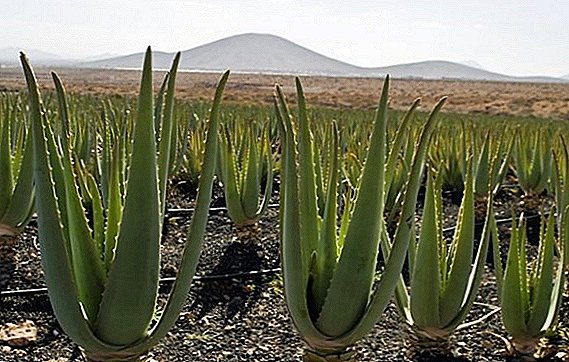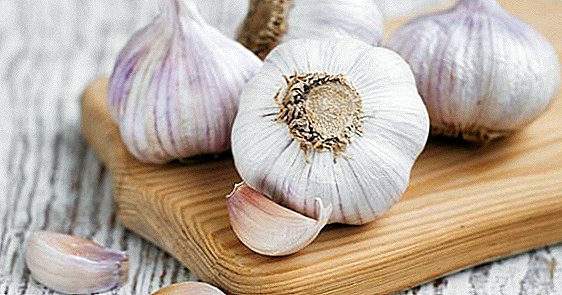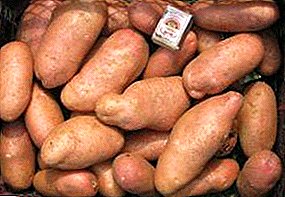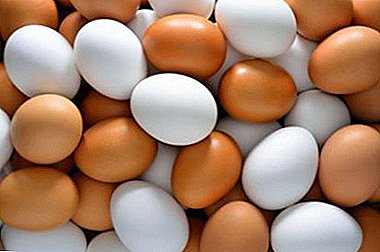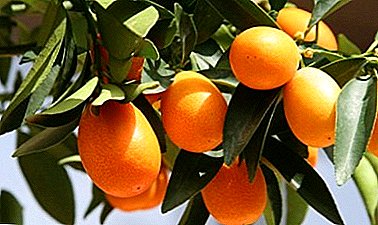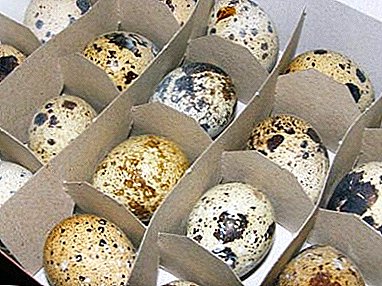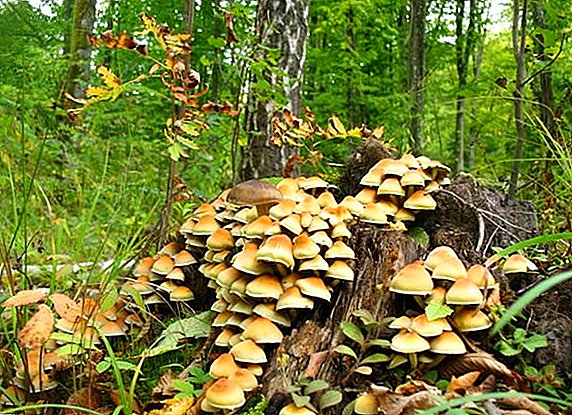 The mushroom honey agaric is loved by all. The species described in literature and on the Internet comprise approximately 22 of their varieties, although it is generally accepted that there are 34 species of agaric. These mushrooms grow almost all year round. They grow on the trunks of trees, grow in families on the stumps, especially rotten.
The mushroom honey agaric is loved by all. The species described in literature and on the Internet comprise approximately 22 of their varieties, although it is generally accepted that there are 34 species of agaric. These mushrooms grow almost all year round. They grow on the trunks of trees, grow in families on the stumps, especially rotten.
Beginner mushroom pickers should not forget that among the mushrooms, as well as among other types of mushrooms, there are their inedible counterparts (poisonous mushrooms), in our case - mushrooms of the honey fungus are false. About what types of inedible mushrooms exist, how to distinguish false mushrooms, as well as the symptoms of mushroom poisoning, tell our article.
Brick wall red
Important! The main difference again from false experiments is the presence of a ring on the leg.Brick wall red similar to autumn autumn. In the photo on the right, there is a real honey agaric, and on the left, a brick-red lamboob.


The main difference from the present foxfish is the cap. It has a spherical shape, rich brick-red color in the center and lighter at the edges. Like all twins, the cap is smooth and dry.
The leg inside is empty, thin and smooth, with time - with a bend. If you break a leg, the mushroom will start to emit an unpleasant smell, but the real ones have a pleasant, mushroom aroma. Inside the cap a cobweb cover, over time, it will hang from the edges.
The plates on the inside change color from yellow to dark brown. Brick-red lobenok grows exclusively on rotten stumps and fallen trees, among the common places are birch, alder, aspen. And sometimes these mushrooms are found on wooden fences.
The growth time of brick-red mushrooms is the same as in autumn ones, from the end of August until the first snow appears.
The folly of seroplastichny
Did you know? The folly seroplastinotny foe is considered an edible mushroom. The taste is not bitter.
 It is used in the preparation of the first and second courses, eaten boiled. The cap of the fungus is thin, light yellow in color with a tubercle in the center. Cap diameter - from three to eight centimeters.
It is used in the preparation of the first and second courses, eaten boiled. The cap of the fungus is thin, light yellow in color with a tubercle in the center. Cap diameter - from three to eight centimeters.
Leg also thin, with a bend. From above it is lighter, yellowish in color, darker below - rusty brown. The color of the plates of the seroplastin spinyfoot is from light yellow to gray-brown. Such a mushroom grows in coniferous forests, on rotting pines.
Important! The folly of the seroplastichny similar to the poisonous mushrooms of the same family, which are called sulfur-yellow. Distinguish their plates of sulfur-yellow fungus, which have a green color.
Watery fossa
Did you know? The folly of the watery is also called Psatirella watery.
 The young mushroom has a bell-shaped cap, and over time the cap becomes flatter. The edges are always torn. The color of the cap depends on the humidity: at high humidity, its color will be brown-chocolate, at lesser - the shade of the watery fox cap will be as close as possible to the cream one.
The young mushroom has a bell-shaped cap, and over time the cap becomes flatter. The edges are always torn. The color of the cap depends on the humidity: at high humidity, its color will be brown-chocolate, at lesser - the shade of the watery fox cap will be as close as possible to the cream one.The leg is tall and smooth, white in color, up to eight centimeters and half a centimeter in diameter. Also, this mushroom has a false ring in the upper part of the leg. The young mushroom is distinguished by light plates, which eventually turn brown. The habitat of this foxfly is deciduous and coniferous forests.
Important! The folly of watery is not considered to be poisonous or edible fungus.
Bast slate yellow
 Bast slate yellow similar to many species of mushrooms: with summer and autumn honey agarics, with seroplastin speculators, which are considered edible. But the sulfur-yellow lanyons themselves are poisonous mushrooms.
Bast slate yellow similar to many species of mushrooms: with summer and autumn honey agarics, with seroplastin speculators, which are considered edible. But the sulfur-yellow lanyons themselves are poisonous mushrooms.
The cap of this species of mushrooms is smooth and without scales. It has the shape of a bell, which over time becomes flatter. The edges are bent inwards. The color of the cap corresponds to the name of the fungus, and at the edges the shade is lighter.
The color of the plates is olive-black. Leg high to nine centimeters in length, cylindrical shape, diameter - up to one centimeter. The mushroom, if cut, has an unpleasant smell, the color of the pulp is sulfur-yellow, of a fibrous consistency.
Scam Fob

Scam Fob also called Psatirella Candoll. The mushroom grows from early May to early autumn. It lives in parks, in gardens, in mixed and deciduous forests.
It is possible to distinguish this type of false smear from others by the white and white-yellow-brown color of the cap. The hat, like the previous species, has the shape of a bell, which is aligned with time, but in the center there is still a small ledge.
Along the edges of the cap hang the remnants of the bedspread, which looks like a gossamer. Cap diameter - from three to seven centimeters. The young mushroom has grayish discs, and the adult has dark brown ones, which also grow to the pedicle.
Leg cream-white color with a fluff below. The length of the leg reaches seven to ten centimeters. As soon as summer comes, Candolle's fox moth competes with another type of dangerous mushroom - shimmering dung. The first grows in the shade, the second - in the sun.
Important! Mushroom Psatirella Candoll is very cunning! Everything affects its appearance - air temperature, humidity, age of the fungus, habitat. Therefore, only an experienced mushroom picker can distinguish these mushrooms from edible mushrooms..
Falcons: first aid for mushroom poisoning
The poison of false agaric infects the gastrointestinal tract. After one or two hours after they have been eaten, poisonous honey agarics will give the first symptoms of poisoning.
They will be the same as in any other food poisoning: dizziness, fever, nausea, vomiting, diarrhea (maybe up to 10 times a day), pain in the abdomen, in more severe cases, delusions, hallucinations and dehydration.
Call an ambulance urgently. And before the arrival of doctors it is necessary to hold a number of activities:
- Gastric lavage (you need to drink the maximum amount of boiled water, regular, salted, with a small solution of potassium permanganate).
- Induce vomiting (press on the root of the tongue with a spoon, drink vomit).
- Clean the intestines (make an enema or drink a laxative).
- Take an antitoxic drug that will bind toxins, such as activated carbon, sorbent.
- Remove with the help of special drugs stomach cramps.
- Cover the legs with a hot water bottle.
- Drinking more liquid (drinking must be warm, it can be all kinds of teas, water with lemon, but without gas!), This will prevent dehydration.
Important! Mushroom poisoning can lead to such serious diseases as gastroenteritis and botulism.Perform all the above actions and expect a doctor. And also remember that in case of any doubts it is better not to pluck any suspicious-looking mushrooms at all, much less to eat them.


